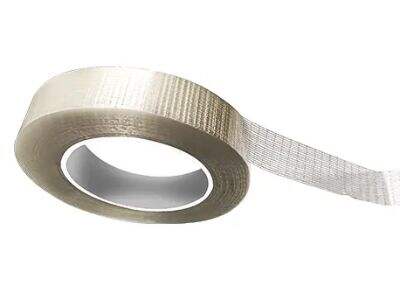How wide the tape is will determine how much area you will be covering when you stick it down. Thickness indicates how strong and durable the tape is. For a larger area use tape that is wider. But for more elaborate or intricate designs, a thinner tape would be better suited for that. At Hongwangkang, we offer a range of copper foil tape in various sizes and thicknesses, so you can find just the right one that matches your project needs.
Grasping the Dimensions of the Tape
But first, let’s get into dimension width and thickness. Tape Width: The width is measurements from one side of the tape to another. If you're tackling something big, like wrapping or covering a larger area, you'll want to go for a wider tape that will help you get the job done in no time! However, if you are doing something that requires a lot of small detailed work like a craft or a model, thinner tape will help you make those fine lines and designs. Hongwangkang provides copper foil tape in different sizes and thicknesses, enabling you to select a choice that suits your project specifications.
Evaluating the Sticky Strength in Context of Your Project
Now let’s consider the stickiness or adhesive strength of the copper foil tape. The sticky side of the tape is the part you need to pay attention to the most, as it will dictate how the tape sticks to the surface of your project. If your needs require something that is going to adhere very well, what you want is tape with a strong adhesive. Tape like this will do wonders and keep everything where it needs to be. Alternatively, if you are working on a project when you may want to peel the tape off later without leaving any sticky marks or residue, then you would opt for tape that has a lighter stickiness. That way, you can easily take it off when you’re done.
Considering the Texture of Your Materials
Now, let’s discuss the texture of the surfaces you are going to apply the tape on. Texture is the smoothness or roughness of a surface. If your tape is required to be performed on a smooth surface, it is best to use tape with a firm adhesive so the surface can be attached. The copper tape needs to grip tightly so that you don’t get peel-back. But for rough surfaces, such as wood or textured materials, choose tape with a thicker backing. It makes for a stronger bond, making sure the tape stays in place even on uneven surfaces. Hongwangkang provides copper foil tape that comes in a number of backings, so that you can obtain the backing that will work best for your project.
Testing Different Copper Foil Tapes For Conductivity
Another thing to take into consideration is the electrical conductivity of different copper foil tapes. The ability of the tape to allow electricity to pass through it is termed its conductivity. If your project calls for strong conductivity — say, making an electrical circuit or creating a project that needs to carry electrical signals — then you should choose a tape that contains a lot of copper. It's a tape that is intended to conduct electricity well. But if your project is just a slight need for conductivity, then you can opt for a tape that has a small amount of copper.
Select Good Quality Tape you Can Near Your Budget
At last but not least, I'd recommend you select a good quality copper foil tape which suits your budget. You may be tempted to find a budget option, however, high-quality tape will provide better results and durability for your project. Buying high-quality tape to prevent future issues such as peeling or poor adhesion. Fortunately, Hongwangkang has high-end tape copper and all these products are reasonably priced. That means you can get high quality without breaking your budget.
 EN
EN
 AR
AR
 CS
CS
 DA
DA
 NL
NL
 FI
FI
 FR
FR
 DE
DE
 EL
EL
 HI
HI
 IT
IT
 JA
JA
 KO
KO
 PL
PL
 PT
PT
 RO
RO
 RU
RU
 ES
ES
 TL
TL
 IW
IW
 ID
ID
 SR
SR
 UK
UK
 VI
VI
 HU
HU
 TH
TH
 TR
TR
 FA
FA
 AF
AF
 MS
MS
 GA
GA
 BE
BE
 IS
IS
 HY
HY
 BN
BN
 LA
LA
 MN
MN
 SO
SO
 MY
MY
 KK
KK

